The past and the future are never very far apart in China. Capital is once again flowing into Tianjin bike factories that just 30 years ago were churning out Pigeons, Phoenixes and Yongjius. Today, Mobikes, Ofos and Bluegogos top the list of orders, as biking – so long considered a thing of the past – contends to play a more permanent role in China’s future.
“There are nine million bicycles in Beijing. That’s a fact. It’s a thing we can’t deny.” So begins British singer Katie Melua’s 2005 single ‘Nine Million Bicycles.’ Inspired by her trip to the capital in the early 90s, the song describes China as many will always remember it: the ‘kingdom of bicycles.’
Though invented in Europe, bikes have long enjoyed a unique kind of welcome in China. In the 50s, ‘three rounds and a sound’ – a bicycle, sewing machine, wristwatch and radio – were what every Chinese household strived to possess. By the 80s, many families could finally afford them, and hordes of bikes could be seen flooding Beijing’s Chang’an Street every morning and at dusk.
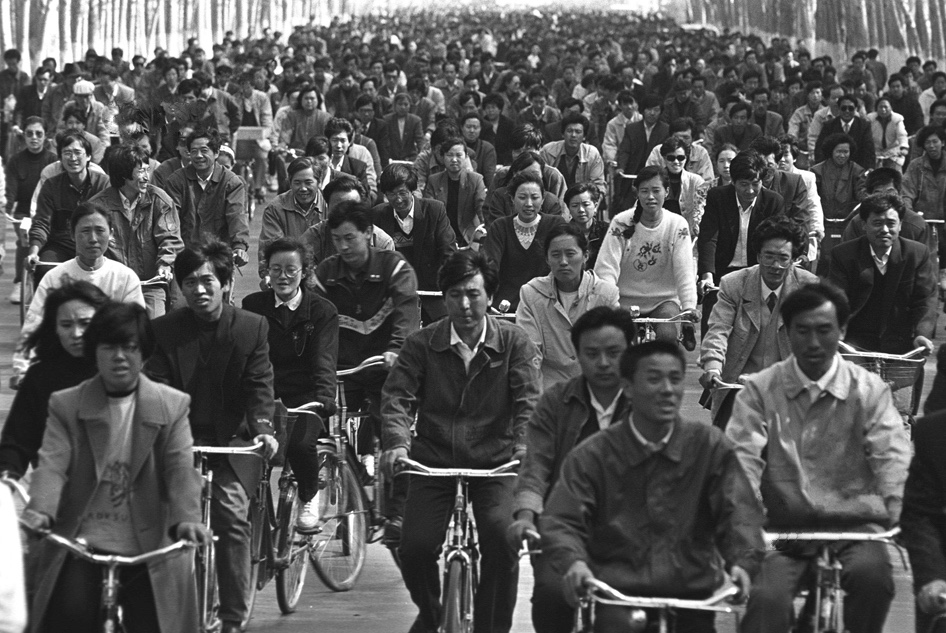
Today, a fresh wave of bike mania is once again sweeping the country. Yet this time, it’s not the black Phoenix or forest green Pigeon clogging urban lanes, but a polychromatic mix of dock-less, park-anywhere shared bikes.
On the morning of April 22, 2016, hundreds of orange and silver frames appeared on Shanghai’s streets for the first time, all armed with a GPS-assisted lock that allowed users to park any time, any place. All one had to do was download a mobile app, scan a QR code to unlock the bike and press down a lever to lock it once the trip was finished.
Dubbed the ‘Uber for bikes,’ Mobike’s easy-to-use application and affordability appealed to hundreds of thousands of users seeking a quicker way to cover that final kilometer in their daily commute inaccessible by metro or bus. Even avid bikers grew to prefer shared bikes over their own wheels, which came with the risk of being stolen.
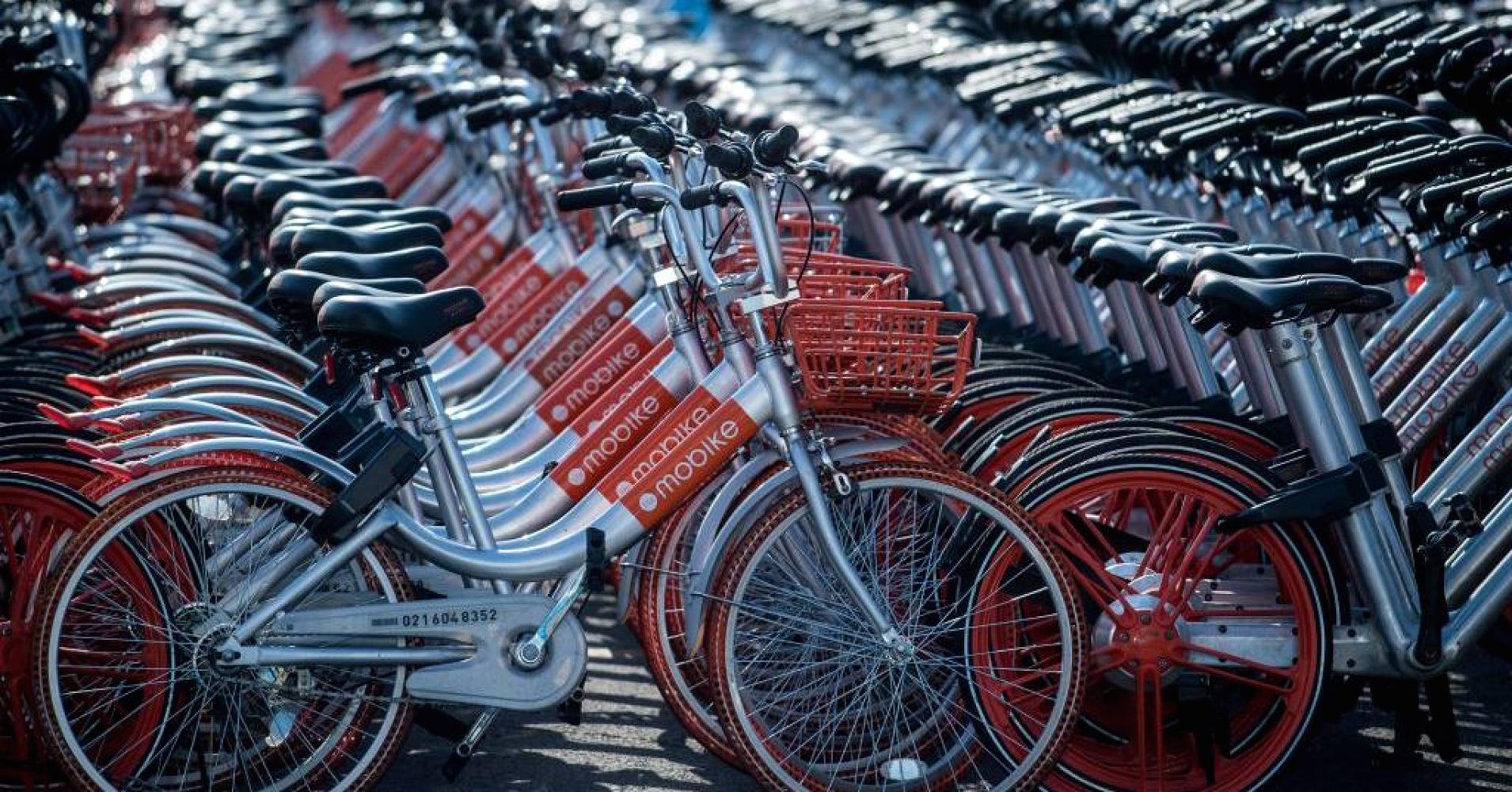
Copycat start-up firms arose in no time, hurling themselves onto the bike-share bandwagon.
In a matter of months, the sea of orange spilling onto sidewalks expanded to include nearly every color in the rainbow. As of March 2017, there were 174 bike-share schemes in 30 of China’s 34 province-level divisions, according to ExpatFinder.
And whereas it may have been difficult to locate a shared bike within half a kilometer of your home or office a year ago, today, you’re likely to see dozens – maybe even hundreds – parked beside the nearest intersection, metro station or mall.
Cycles of the Past
China’s penchant for pedaling is nothing new. Puyi, the country’s last emperor before dynastic rule gave way to a republic, was a bike enthusiast and collector himself. It was upon his request, in fact, that all of the thresholds within the Forbidden City were leveled to make the grounds more ‘bike-friendly.’
In 1868, the first foreign bicycle arrived in Shanghai, and by 1937, the first bike factory was established in Tianjin. Thirteen years later, that factory would turn out the Pigeon – the first bike ever produced in the PRC.
Early production was relatively crude: rims were crafted with old gasoline drums left by the US Army, while frames were welded using water pipes.
The bikes were absurdly heavy as a result, and riders would often sweat so much that they would ‘sweat out’ the common cold, leading some to nickname the vehicles ‘Aspirin bikes.’
China spawned more than 33 million bicycles in 11 months in 1986, meaning more than one bike was produced every second.
In the 70s, the three most popular Chinese bicycle brands – Phoenix, Pigeon and Yongjiu – were in high demand and low supply in cities and towns alike. China’s planned economy meant one needed a ticket to purchase a bike, and no amount of power or money could guarantee obtainment of the coveted coupon.
As China’s economic vision transformed in the 80s, so too did its bike production. Spare parts factories and more efficient assembly lines sprang up as the State Council poured money into developing mechanical products. According to a report by Hong Kong-based Phoenix TV, China spawned more than 33 million bicycles in 11 months in 1986, meaning more than one bike was produced every second. By the end of the decade, a population of 10 million people in Beijing possessed no fewer than 8 million bikes.
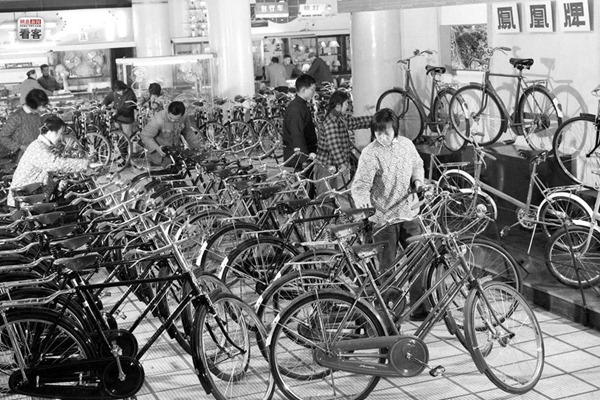
From the 70s to 90s, biking reflected the country’s relatively basic standard of living. To a large extent, the demand for cycles was driven by their competitive cost and efficiency: they were used to transport straw and rice in the countryside, and to carry one’s wife to work in the cities. A bicycle was where romance happened – it was an intimate part of one’s childhood memories and an icon of Chinese lifestyle.
In the early 90s, two-wheelers were out in full force in China’s capital, earning it a reputation as the ‘city of bicycles.’
But the phenomenon didn’t last long. The country was on the fast track towards modernization, after all, and bicycles were destined to become a thing of the past.
“The growth of bikes in cities is not a direction of urban transportation development,” declared the Ministry of Housing and Urban-Rural Development in 1995. Bikes were deemed ‘inferior’ vehicles, and gradually lost their place on public roads.
At the turn of the 21st century, bike commuters were forced to ride between buses.
Automobiles had become the new ‘round’ – or status symbol – and most young people wanted nothing to do with outmoded two-wheeled contraptions.
“I would rather cry in a BMW than smile on the back of a bicycle,” were the famous words uttered by dating show contestant Ma Nuo in 2010. The quote would come to symbolize a decade of materialism fed by record economic growth and a ‘get rich quick’ mentality.
For the few who still found bicycles romantic, China’s increasingly smoggy, congested roads were no longer suitable for a pleasant ride anyway. And so, in time, biking largely fell out of favor.
Bike Share: A New Beginning
The logistics of bike-share have evolved considerably since the concept was conceived in Amsterdam circa 1965.
In 1991, Copenhagen’s ByCylken program utilized heavy-duty bikes chained to bicycle racks with coin-operated locks. Users did not need to register, however, and thus could not be held accountable for vandalized or stolen bikes.
Two years later, La Rochelle, France introduced a system known as the ‘bicycle library’ – the first of its kind to require users to show identification and leave a deposit in order to combat theft and vandalism.
By 2001, the Velo’v program in Lyon, France – considered the ‘third generation of bike-share – resolved many preexisting problems by improving bikes’ security, accountability, monitoring capacity and billing system.
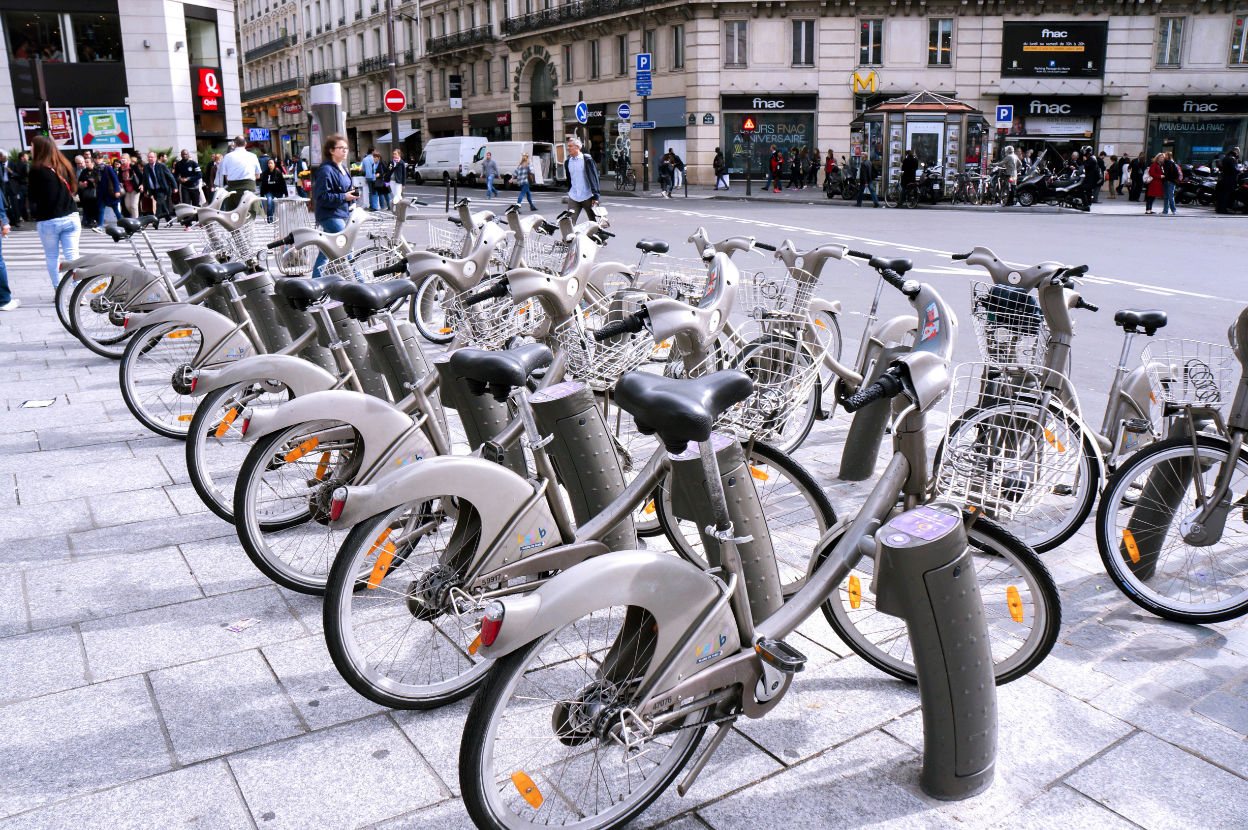
The Vélib program in Paris
Hangzhou, now home to the world’s largest public bike-share program with 84,100 bikes at present, is modeled on the Vélib’ system in Paris. It’s similar to private bike-share models in that users can download an app and scan a QR code to unlock a bike, but the vehicles must be returned to a docking station after use.
Today’s dock-less bicycles can be thought of as the fourth generation of bike-share. Problems of inconvenience have obviously been solved, as users are free to park the wheels almost anywhere. Physical improvements, whether for comfort or durability, are made constantly: Mobike has already released its third model since last year, and Ofo its "3.0 generation."
So far, rider response has been overwhelming positive: a recent survey by the Ministry of Commerce showed the number of dock-less bike-share users in China reached 19 million at the end of 2016. The same source estimates 50 million total users by the end of this year – an increase of roughly 163 percent.
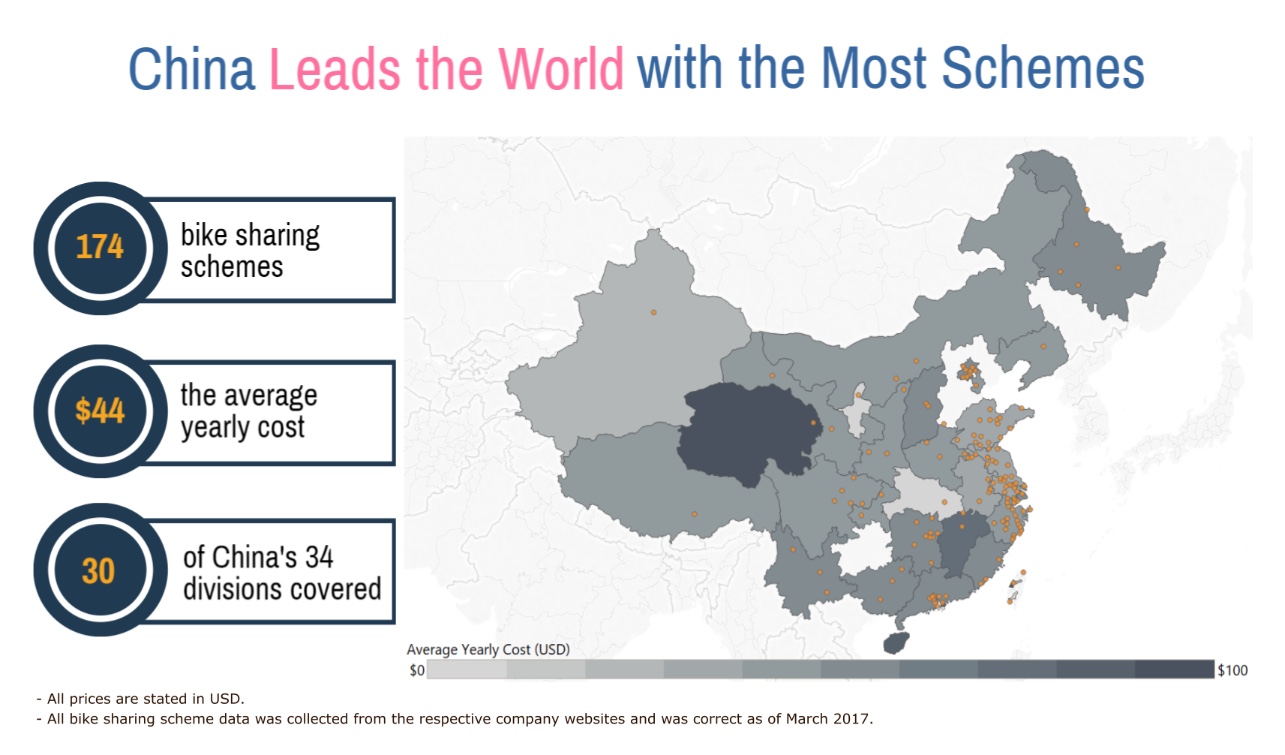
Cycling has arguably become ‘cool’ again: users are pegged as being young, environmentally aware and progressive. Sharing one’s bike route on WeChat will garner one plenty of likes, as will a selfie taken atop a little yellow Ofo.
So positive are Chinese youths' attitudes towards bike-share that many are posing the question: just how did Mobike turn bicycles from obsolete to original in a matter of months? And will the bike-share movement fade as quickly as it arose?
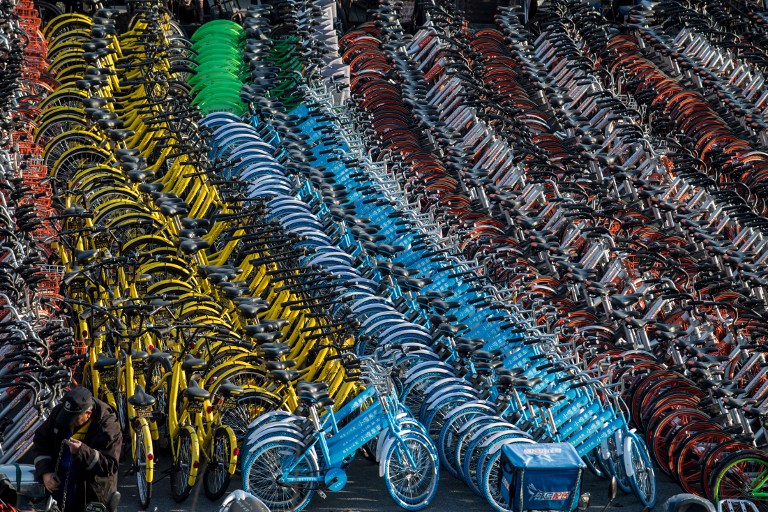
“A bike is simply the fastest and cheapest way to get from A to B,” explains Karl Ulrich, the vice dean of entrepreneurship and innovation at Wharton University of Pennsylvania. “It is three times less expensive than the subway and may cut travel time by five times or more for distances of up to 3 to 5 kilometers.”
Ulrich claims the density of Chinese cities, the government’s attitude, cheap labor costs to distribute and maintain bikes as well as a comparably low crime rate in China have all contributed to bike-share’s explosive popularity. There’s one more factor: the country enjoys a complete supply chain for bicycles that enables low-cost, efficient production.
Tianjin, the same city that turned out China’s first Pigeon, is now home to 1,000 bike manufacturers and more than 700 spare parts manufacturers, according to a report by the Ministry of Commerce of China. Some factories there average nearly two bikes per minute.
An Unsteady Future
As shared bicycles are distributed daily by the truck-full onto China’s first- and second-tier city streets, however, the very factor that once made them so convenient and popular is the same factor that could spell their death.
Dock-less bike-share companies began operating in cities ‘Uber-style,’ or without permission, and the ‘park anywhere’ strategy has become both a blessing and a curse.
Firstly, the sheer number of wheels out on the streets is posing a problem, as Shenzhen discovered during the three-day Qingming Festival this past April. According to the management center at Shenzhen Bay Park, around 10,000 shared bikes were brought inside the park on one day during the holiday, rendering some paths impenetrable.
READ MORE: These Photos Show Just How Out of Control Beijing's Shared Bike Issue Is
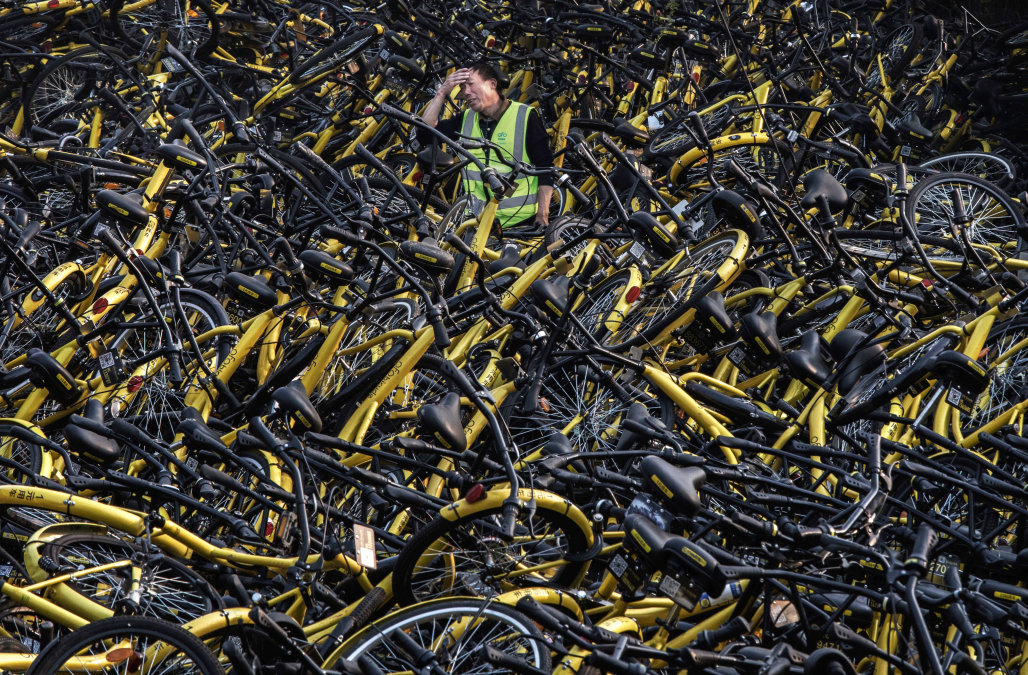
Shenzhen authorities were so fed up with the mass of Mobikes, Ofos and Xiaomings that they enforced a park-wide ban on shared bikes the following day, and pledged to do the same on all future holidays and weekends.
Other cities like Shanghai have tried to maintain order in public spaces by demarcating specific parking spaces for bike-share models on sidewalks.
But abandoned bikes are still a common sight on highways, in underground parking garages and even hanging from tree branches. They are constantly abused – rendered useless by having their locks broken, tires flattened, seats stolen or QR codes scratched off. Others are simply tossed into lakes or rivers.
“They’ve become a real burden, these bikes, especially at night,” says a Guangzhou taxi driver surnamed Wang, who hails from the northern province of Shandong. “These young people ride in the middle of the street, earphones in, and sometimes we can’t see them.”
Children in particular are at risk of falling and collisions. Though kids under 12 years of age are not legally allowed to cycle on streets in China, one research group found that 2 percent of all shared bikes in Beijing, Shanghai, Guangzhou, Shenzhen, Wuhan and Chengdu are used by children under 12.
READ MORE: Thousands Banned from Shared Bikes in Shenzhen
In March of this year, an 11-year-old boy died at an intersection in Shanghai after he was run over by a coach bus while riding an Ofo.
The issue of bike-share safety is calling fresh attention to the dearth of proper bike lanes in many Chinese cities.
Liu Shaokun, greenway and parking program manager at the Institute for Transportation and Development Policy’s Guangzhou office, says he is frustrated by the lack of bike-friendly routes and the fact that existing bike lanes are often hijacked by cars and busses.
“In the road construction blueprint of Guangzhou [a few years ago], the transportation committee wanted to weed out bike lanes,”
Liu explains. “But I hope bike-share will push the municipal government to consider planning more.”
Sustainable transport consultant Bram van Ooijen, who founded Cycle Canton tours in Guangzhou, believes dock-less bike share is here to stay, but some of the current schemes may fold in the near future.
“It will be a matter of who provides the most convenience to users in terms of availability of bikes and quality of bikes over time, including the maintenance and replacement of older bikes, and convenience and added services through the app,” says Ooijen. He hopes to see city governments implement more bike-related infrastructure to improve the cycling experience.

Fu Ling, director of public relations at Mobike’s Guangzhou office, is optimistic about the affect his company’s bicycles may have on the future of urban planning in China.
“Mobike records the route taken by each one of our bikes every day,” he explains. “This data is valuable for transportation planning.”
But the road ahead will undoubtedly be rough.
In cities like Amsterdam, which now boasts more than 35,000 kilometers of bike lanes and traffic laws that favor cyclists, citizens spent the better part of 30 years negotiating changes to their city’s streets.
In China, the recent popularization of bike-share is merely a seedling of hope that the country may one day achieve something similar to the Dutch model.
When the novelty of bike share fades, it’s unclear whether bicycles will still hold the same appeal in China. And if by chance they do, municipalities will need to be ready to foster the trend by introducing more constructive regulation, broader bike lanes and incentives to choose greener strides for bluer skies.
Only then will China’s historic affinity for bicycles find a more definite place in its future.
READ MORE: Here's How Shanghai Will Solve the City's Bike-Share Woes
[Images via CNBC, theurbancountry.com, hongkongfp.com, AOL, ExpatFinder]
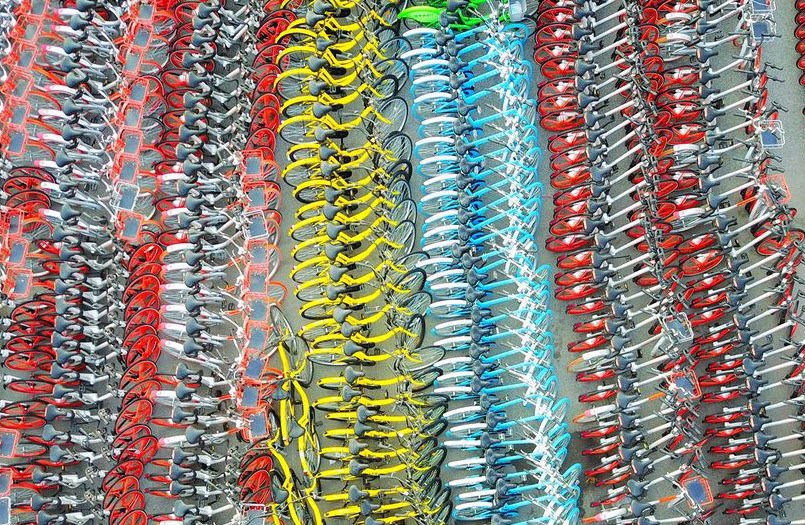






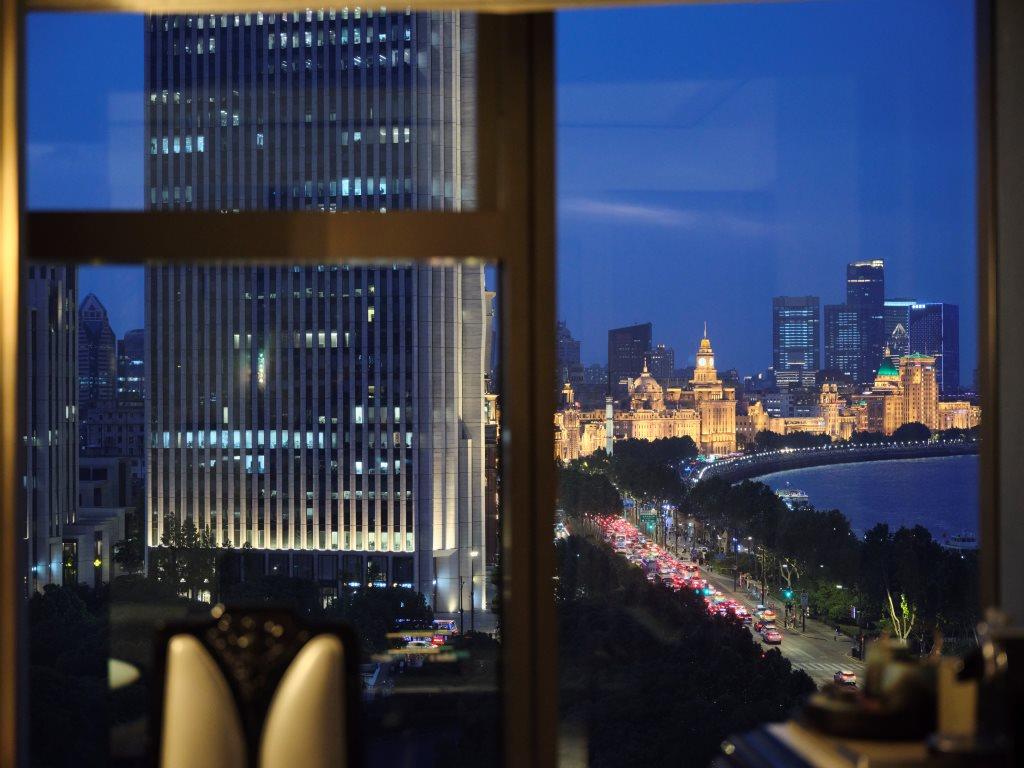













0 User Comments